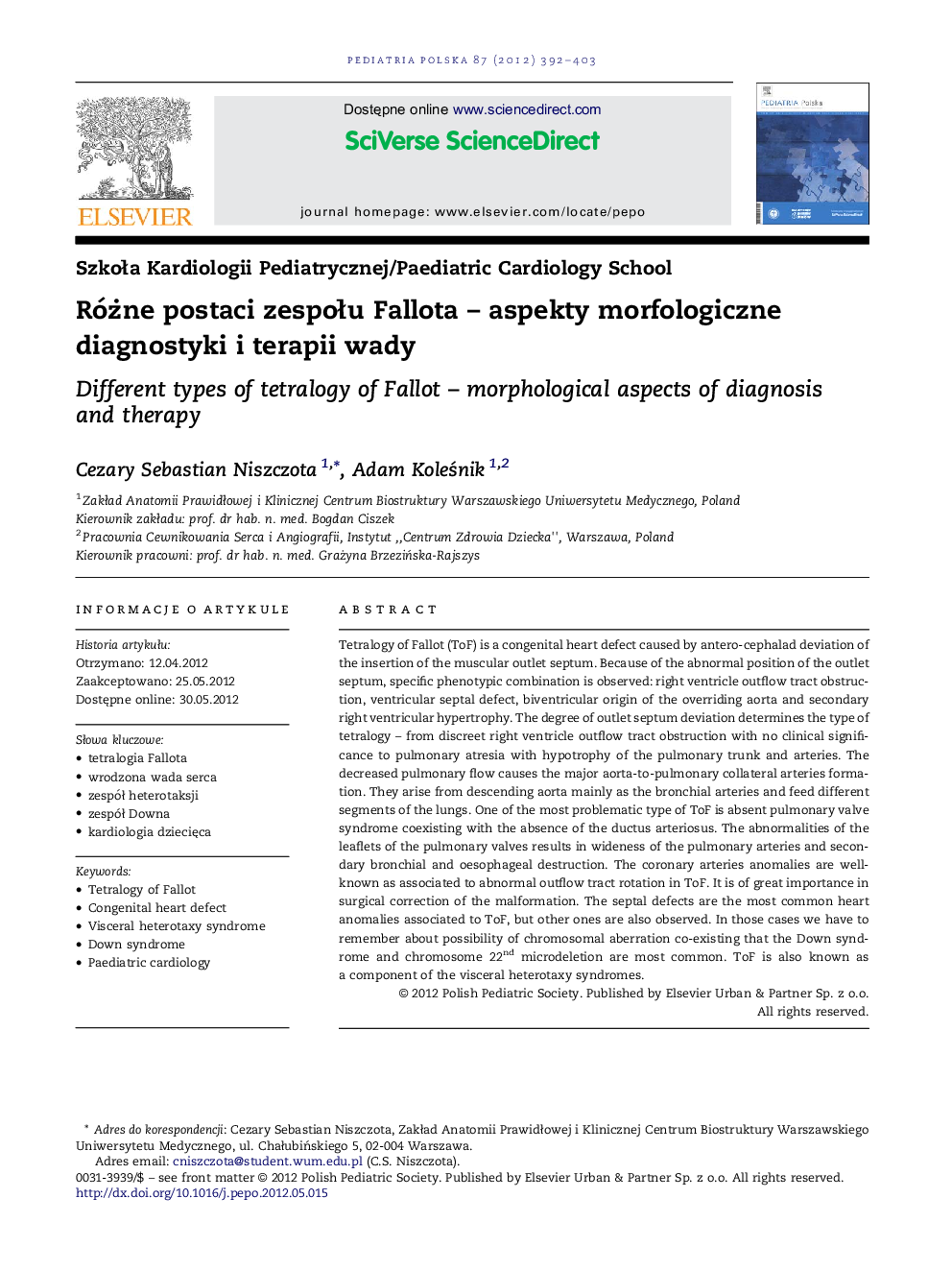| Article ID | Journal | Published Year | Pages | File Type |
|---|---|---|---|---|
| 10163021 | Pediatria Polska | 2012 | 12 Pages |
Abstract
Tetralogy of Fallot (ToF) is a congenital heart defect caused by antero-cephalad deviation of the insertion of the muscular outlet septum. Because of the abnormal position of the outlet septum, specific phenotypic combination is observed: right ventricle outflow tract obstruction, ventricular septal defect, biventricular origin of the overriding aorta and secondary right ventricular hypertrophy. The degree of outlet septum deviation determines the type of tetralogy - from discreet right ventricle outflow tract obstruction with no clinical significance to pulmonary atresia with hypotrophy of the pulmonary trunk and arteries. The decreased pulmonary flow causes the major aorta-to-pulmonary collateral arteries formation. They arise from descending aorta mainly as the bronchial arteries and feed different segments of the lungs. One of the most problematic type of ToF is absent pulmonary valve syndrome coexisting with the absence of the ductus arteriosus. The abnormalities of the leaflets of the pulmonary valves results in wideness of the pulmonary arteries and secondary bronchial and oesophageal destruction. The coronary arteries anomalies are well-known as associated to abnormal outflow tract rotation in ToF. It is of great importance in surgical correction of the malformation. The septal defects are the most common heart anomalies associated to ToF, but other ones are also observed. In those cases we have to remember about possibility of chromosomal aberration co-existing that the Down syndrome and chromosome 22nd microdeletion are most common. ToF is also known as a component of the visceral heterotaxy syndromes.
Related Topics
Health Sciences
Medicine and Dentistry
Dermatology
Authors
Cezary Sebastian Niszczota, Adam KoleÅnik,
